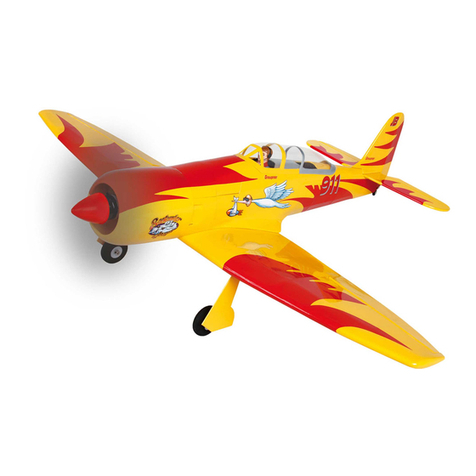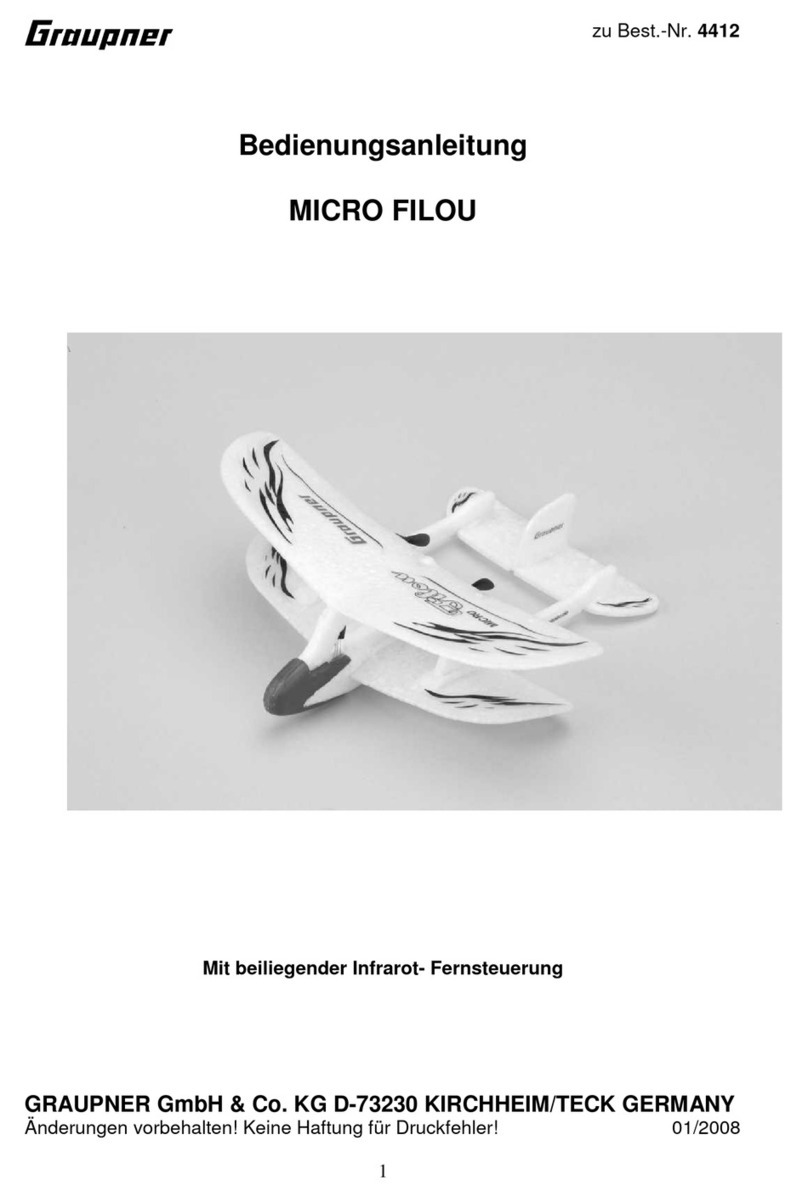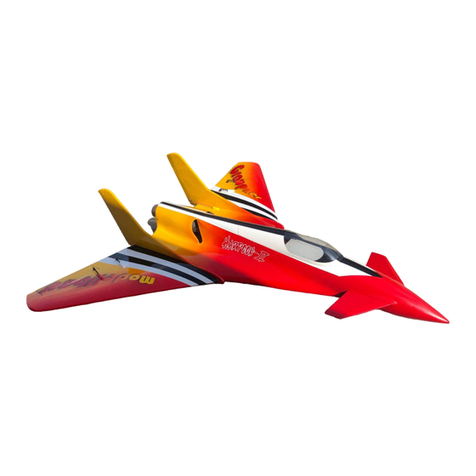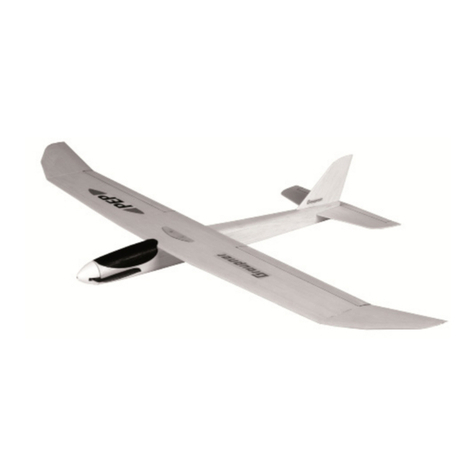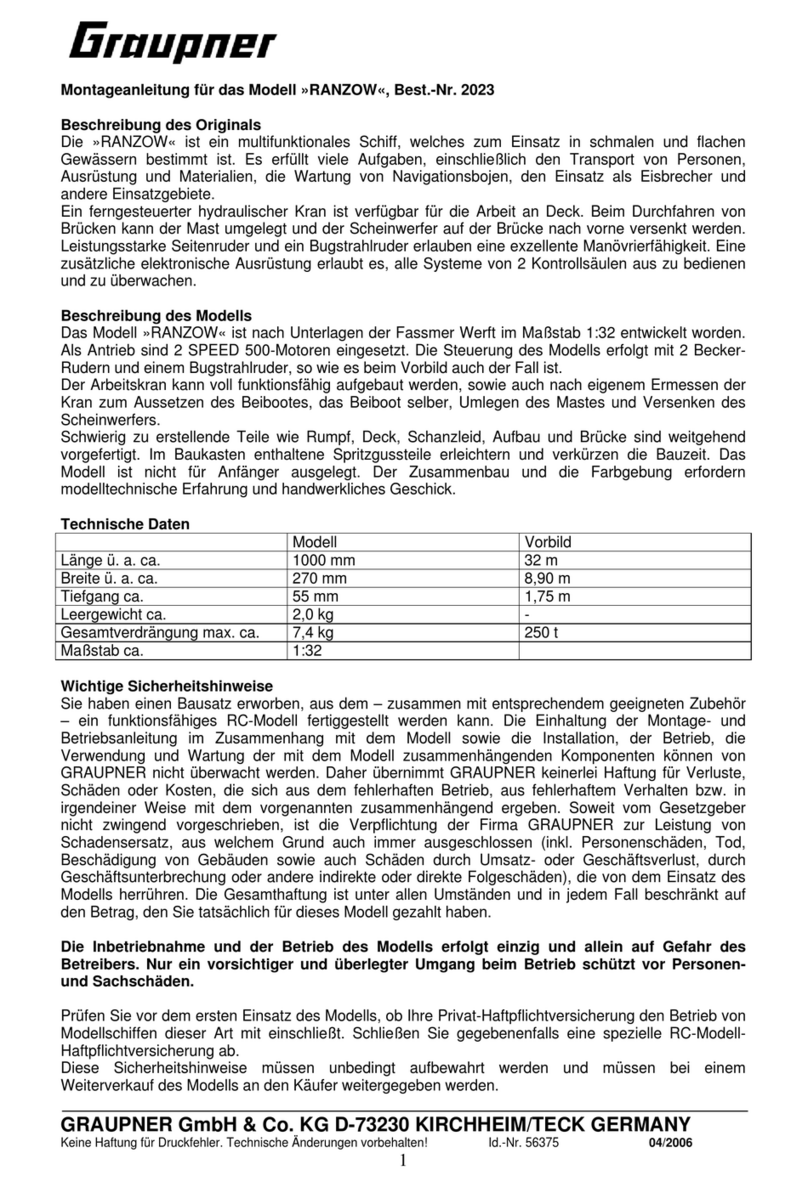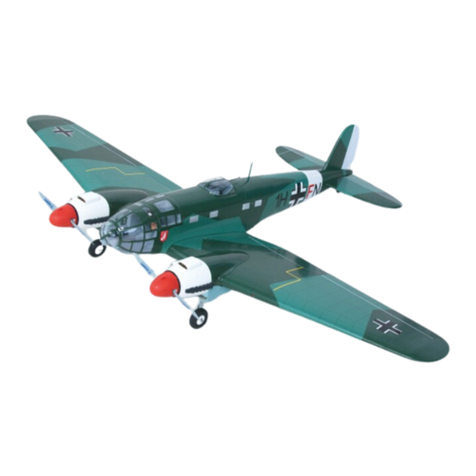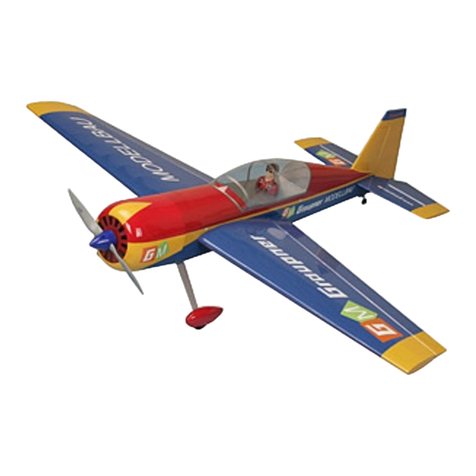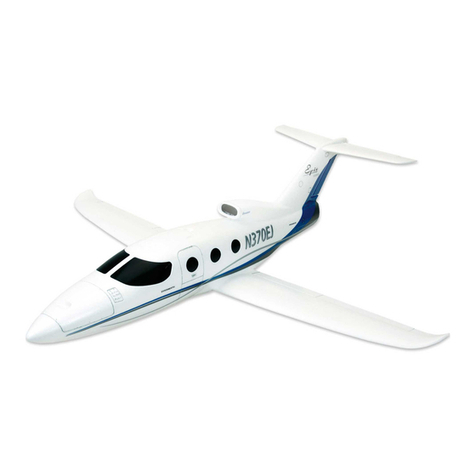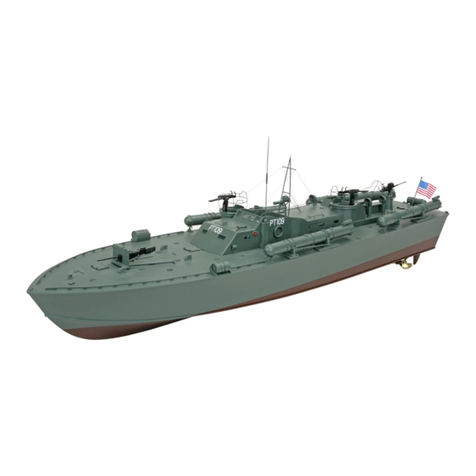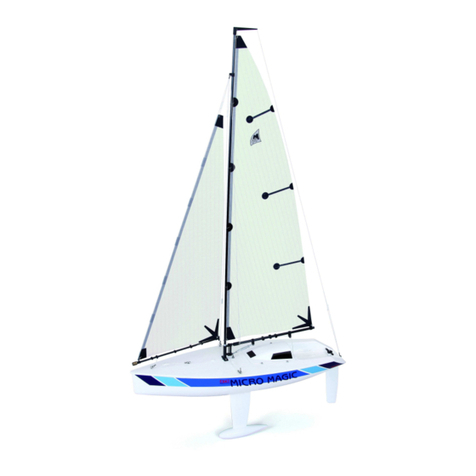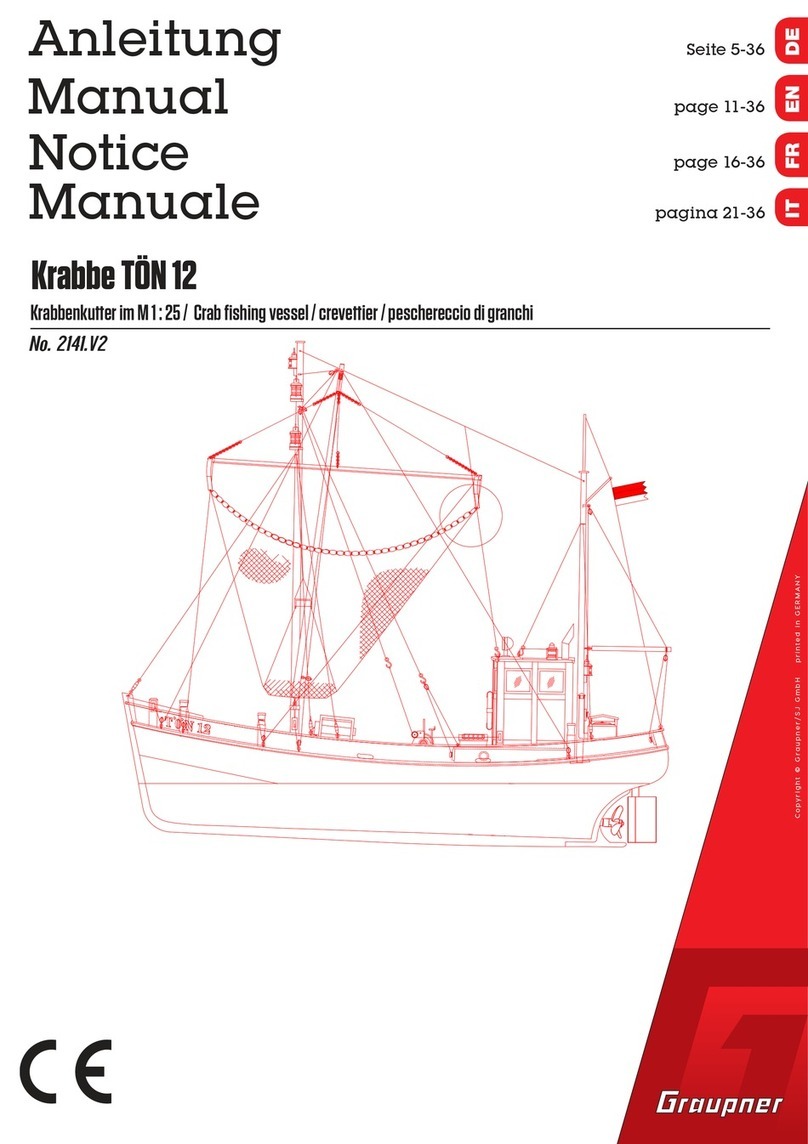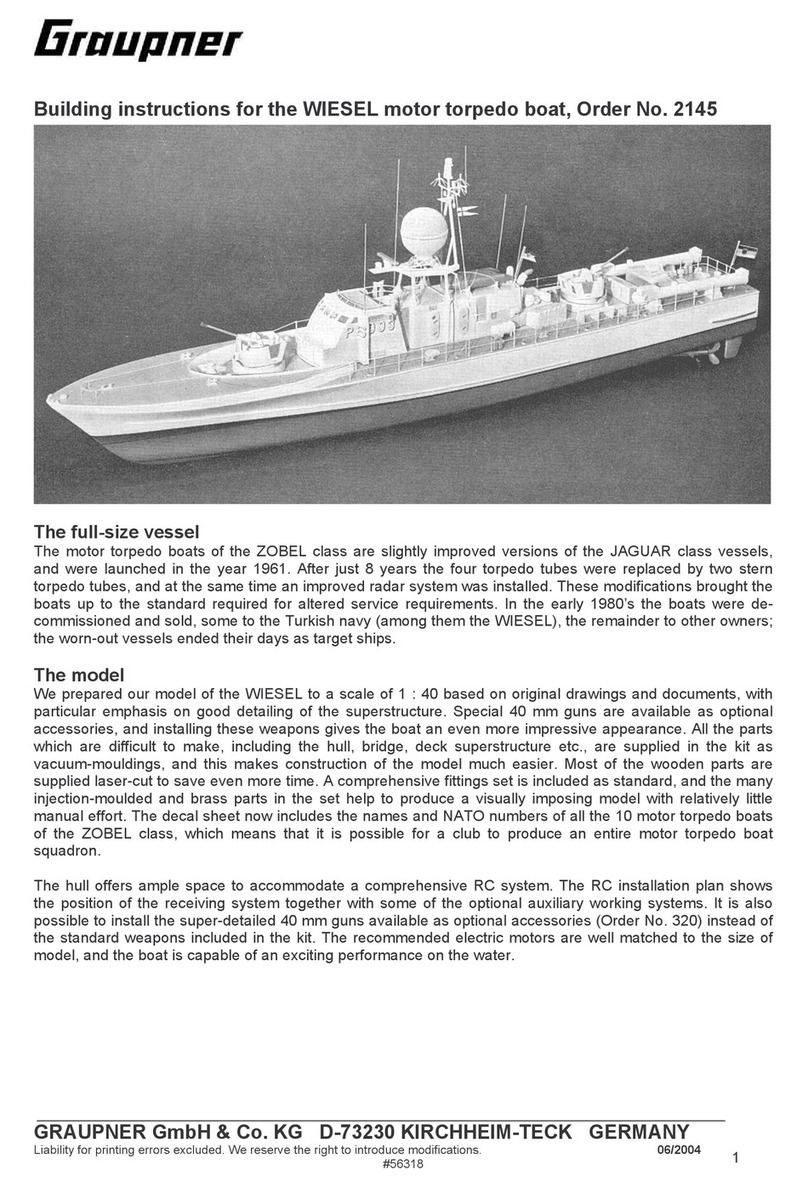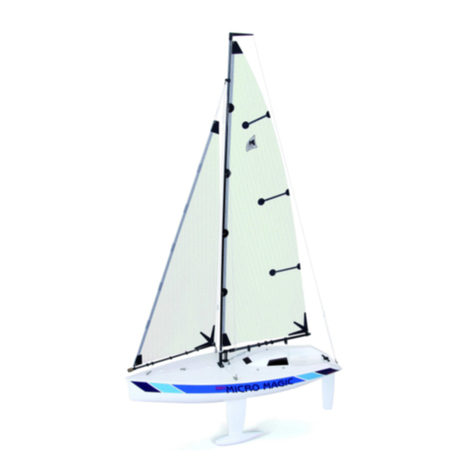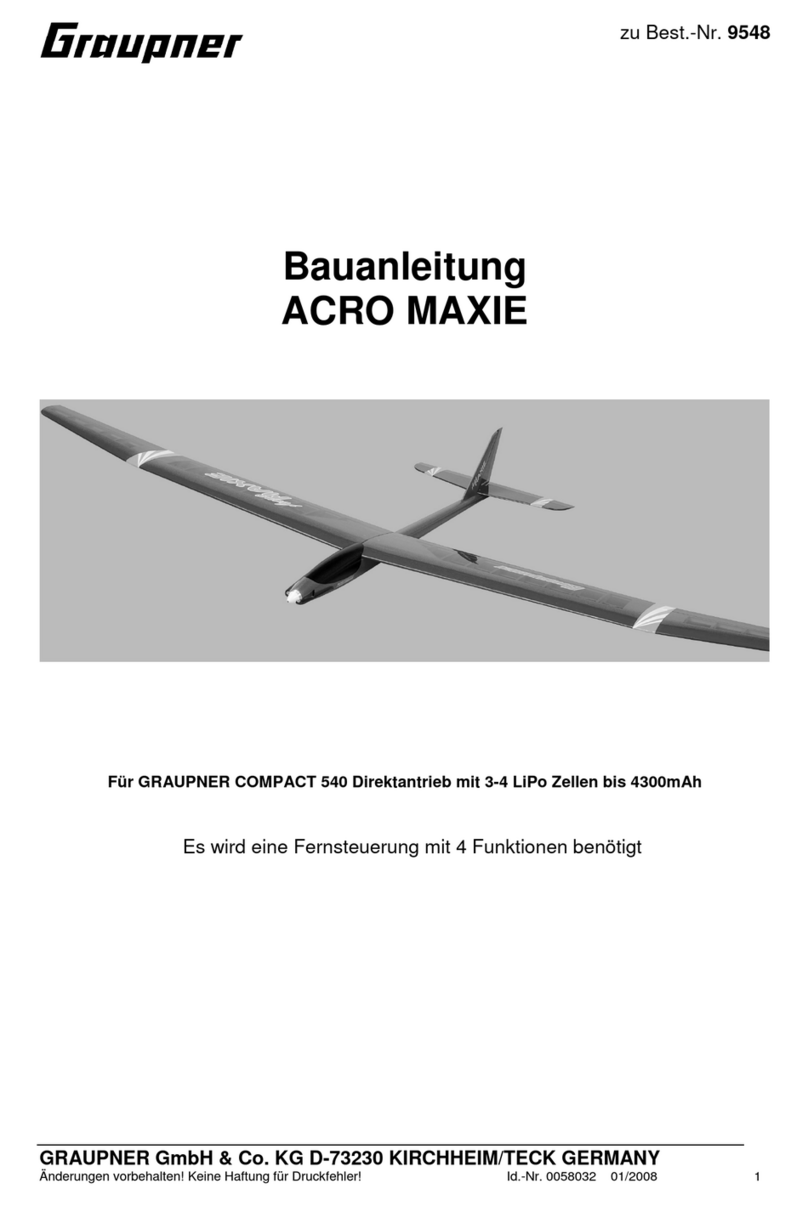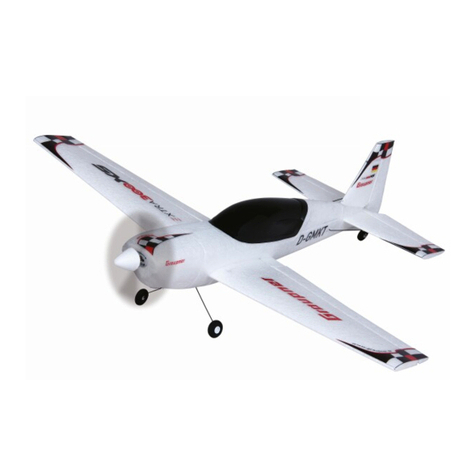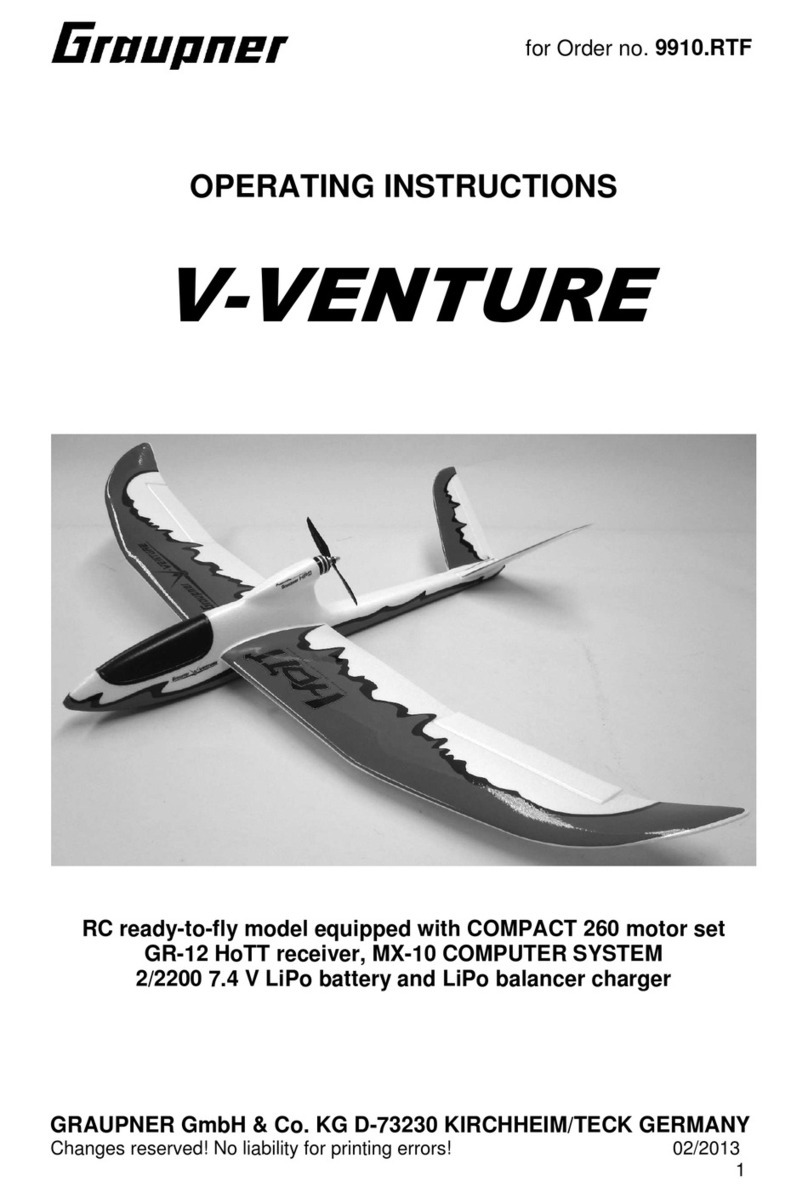
GRAUPNER GmbH & Co. KG D-73230 KIRCHHEIM/TECK GERMANY
Modifications reserved. No liability for printing errors 12/2010
0062196
2
Specification
Wingspan approx. 3001 mm
Overall length approx. 1420 mm
Wing section TA-30 series, 8.3 %
Tailplane section 10%
Wing area approx. 48.2 dm²
Tailplane area approx. 4.2 dm²
Total surface area approx. 52.4 dm²
Min. all-up weight, according
to fittings, approx. 2450 g
Longitudinal dihedral approx. 1- 1.3°
Centre of Gravity approx. 84 - 88 mm aft of the wing root leading edge
Important safety notes
You have acquired a kit which can be assembled into a fully working RC model when
fitted out with suitable accessories. However, we as manufacturers have no control
over the way you build and fly your RC model aircraft, nor how you install, operate
and maintain the associated components, and for this reason we are obliged to deny
all liability for loss, damage or costs which are incurred due to the incompetent or
incorrect use and operation of our products, or which are connected with such
operation in any way. Unless otherwise prescribed by binding law, the obligation of
the GRAUPNER company to pay compensation, regardless of the legal argument
employed, is excluded. This includes personal injury, death, damage to buildings,
damage due to loss of business or turnover, interruption of business or other direct or
indirect consequent damage whose root cause was the operation of the model.
The total liability in all cases is limited to the amount of money which you actually
paid for this model.
This model aeroplane is built and flown at the sole and express responsibility of the
operator. The only way to avoid injury to persons and damage to property is to
handle and operate the model with the greatest care and consideration at all times.
During construction
When handling adhesives and solvent-based materials it is important to observe the
safety notes and instructions supplied by the manufacturer. Many glues and solvents
are capable of causing injury and damage to materials if they are not used com-
petently. Take waste glue and paint to your local model shop or toxic waste collection
centre.
Note that balsa knives, pins, etc. have sharp points and edges, and should be hand-
led carefully to avoid injury.
Take care to keep tools, adhesives and paints out of the reach of children.
A large, unobstructed working surface is a great advantage for all types of model-
making.
If you are a relative beginner and are not sure of any process, it is always best
to ask an experienced modeller for help.
